How to set up your new powered or active stereo speakers for the best sound
From perfect positioning to a bit of tilt, here's how to get your stereo speakers sounding their best
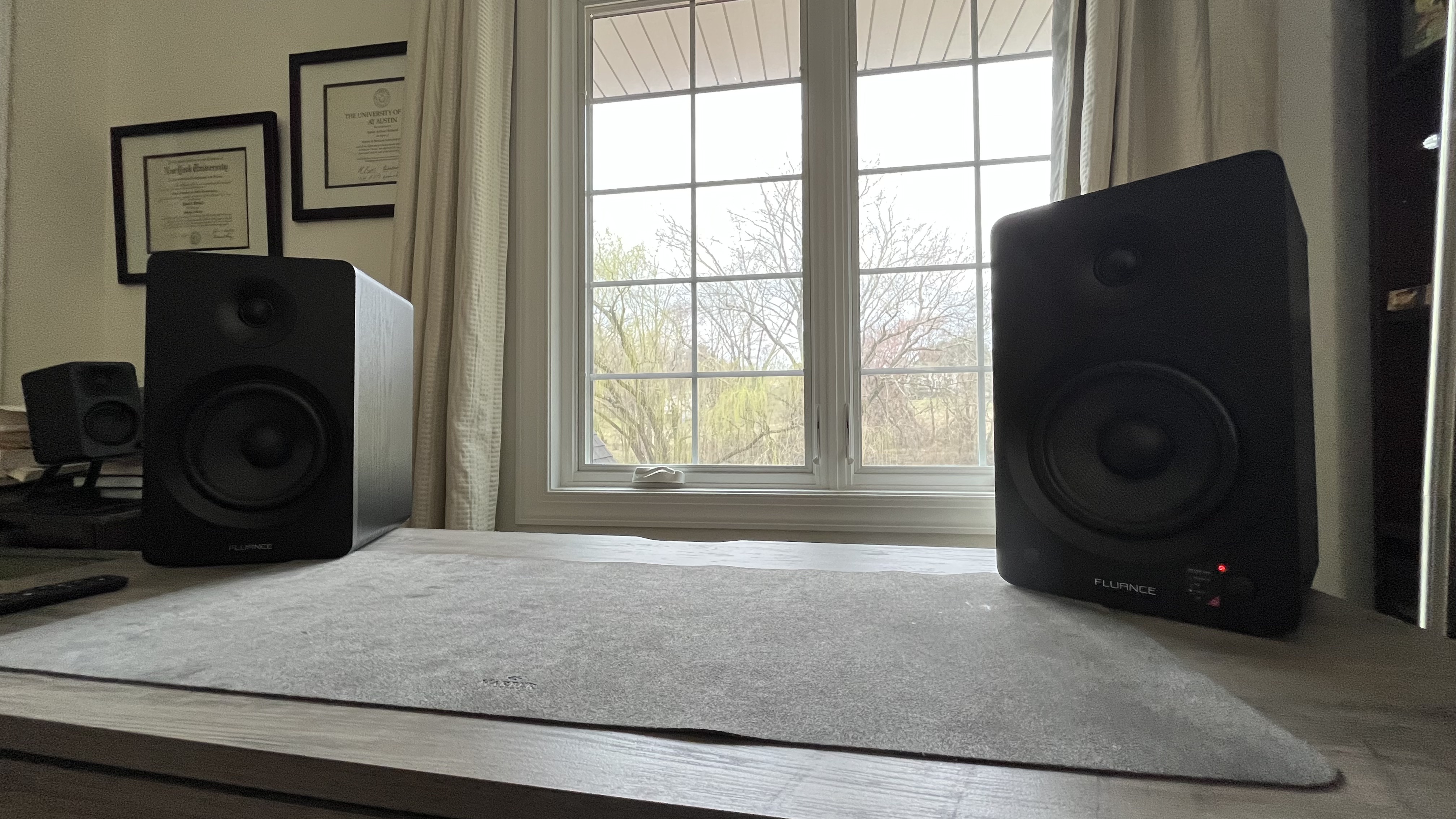
When it comes to listening to music, convenience has trumped audio quality for a lot of people. Yet, the best wireless speakers leave something to be desired. When you really want to experience your favorite music and not just use that Spotify playlist or some Katie Melua as background mulch, you need better speakers.
The question then is how to upgrade your setup. The first and obvious step is to get a pair of the best stereo speakers you can get your hands on. However, that’s not enough. Yes, you will hear an immediate improvement. But you also need to properly set up those speakers so that they deliver an immersive, stereo aural image that offers what you’re looking for from your listening sessions.
While I won’t go quite as in depth as many a bona fide audiophile would, the broad concepts are basically the same, if a bit slimmed down. Picking the right speakers can be subjective but crucial, while not properly placing the sound boxes will give you flat-sounding results even with a good-quality product.
To illustrate some of the points I’m making in this article, I’m using the Fluance Ai61 powered speakers, big brother to the Fluance Ai41. There are some pros and cons to using these speakers for this purpose, but they’ll help me touch on each part of the equation, especially placement.
With all that in mind, let’s dive deeper into how you can upgrade your listening experience.
Some things to know if you’re still picking out speakers
First, be aware that there is a huge range of prices, from under a hundred bucks to more than the price of a car. The Fluance Ai61 used for this article go for $299.99 (£299.99 / approx. AU$480 where sold) and are ideal for those wanting to move on from the budget category to something more substantial, while still being (relatively) affordable. They sound very good for their price point.
If you want to go straight into audiophile territory, you can spend quite a bit more for something like the KEF LSX II LT, which are true active speakers (with a dedicated amp for each unit), that go for $999 / £899 / AU$1,699.
Get daily insight, inspiration and deals in your inbox
Sign up for breaking news, reviews, opinion, top tech deals, and more.
Speaking of which, you’ll see that speakers are either listed as powered (meaning there's one amp squirrelled away in the master speaker to power both of them), active, or passive. The key thing to know here is that with powered or active speakers, all you have to do is plug in the power as well as your source device (a computer, phone, turntable, etc.) to start listening. There's amplification power within the design, see.
Passive speakers, on the other hand, only have the actual tweeter and woofer units inside – no power, no connectivity other than speaker wire. You’ll need to own a receiver, and an amp if the receiver doesn’t have one built in, to connect your sources, which in turn will connect to and power the speakers.
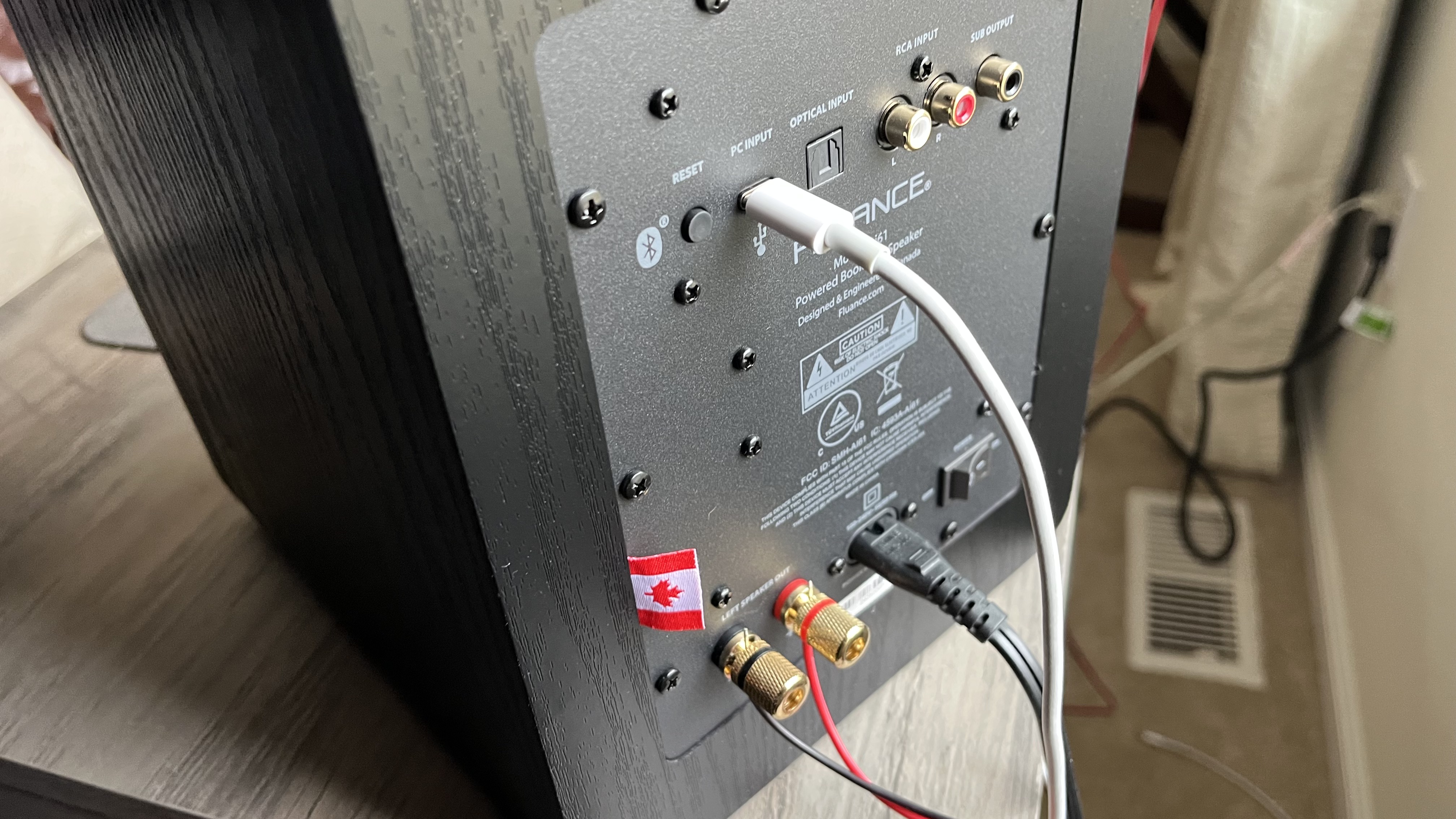
Powered speakers are much more convenient, but they can be limiting. Speaker technology has not changed all that drastically over the years – there’s a reason so many people like to pick up old stereo equipment from the 1970s – but things like Bluetooth, Wi-Fi streaming and so on are not only fairly new but always progressing and changing. So, top-of-the-line powered speakers might be out-of-date in a few years.
With passive speakers, you can just upgrade your receiver and keep those speakers you like so much. Also, if something breaks with the power section of a powered speaker, you have to either fix or replace the entire speaker instead of the individual component that went bad.
Speaking of connectivity, they tend not to vary across powered speakers and a bit across receivers as well so be aware of what’s important to you. Some might just have an analog RCA input or two – cheaper models from Edifier come to mind – or might only have wired connections. Others might come with Wi-Fi streaming or Bluetooth.
It’s worth noting that if you care about listening to lossless audio, such as physical media or WAV and FLAC files, you’ll want to stick with wired connections, though Bluetooth 5.4 supports AptX Lossless Codec.
Speaker size matters (somewhat)
Depending on your setup and room size, you’re going to want to also pay attention to the speaker size. If you’re in a small room or trying to place speakers on or around a desk, floorstanding speakers are not ideal. They’re better for large spaces where you can sit far away from the speakers. Bookshelf speakers, such as the Fluance, are generally preferable.
The room in which I set them up is fairly small and they’re resting on a decent, but not particularly large desk, so going smaller is easier. Not only are they easier to place – I’ll get into the details of that in the next section – but I’m not taking up as much precious real estate for the speakers.
It’s worth noting that the Fluance Ai61 have 120 watts of power from the built-in amp, which is still overkill for someone like me who is setting up speakers on a desk that they’re sitting at. Something like the Ruark MR1 MkII are ideal because they have 20 watts of power and measure 7.3 x 5.1 x 5.7 inches per speaker, compared with the Fluance Ai61’s 120 watts and dimensions of 13.1 x 7.8 x 9.2 inches.
Some say that amps have a sweet spot for how loud you want to turn them to get the best sound. While I haven’t experienced that with class D amps (the ones built into these and most contemporary active speakers), it’s something worth keeping in mind. Going for overkill is not necessarily ideal, though it’s better than not having enough power.
Get those speakers off your desk – and other necessary adjustments
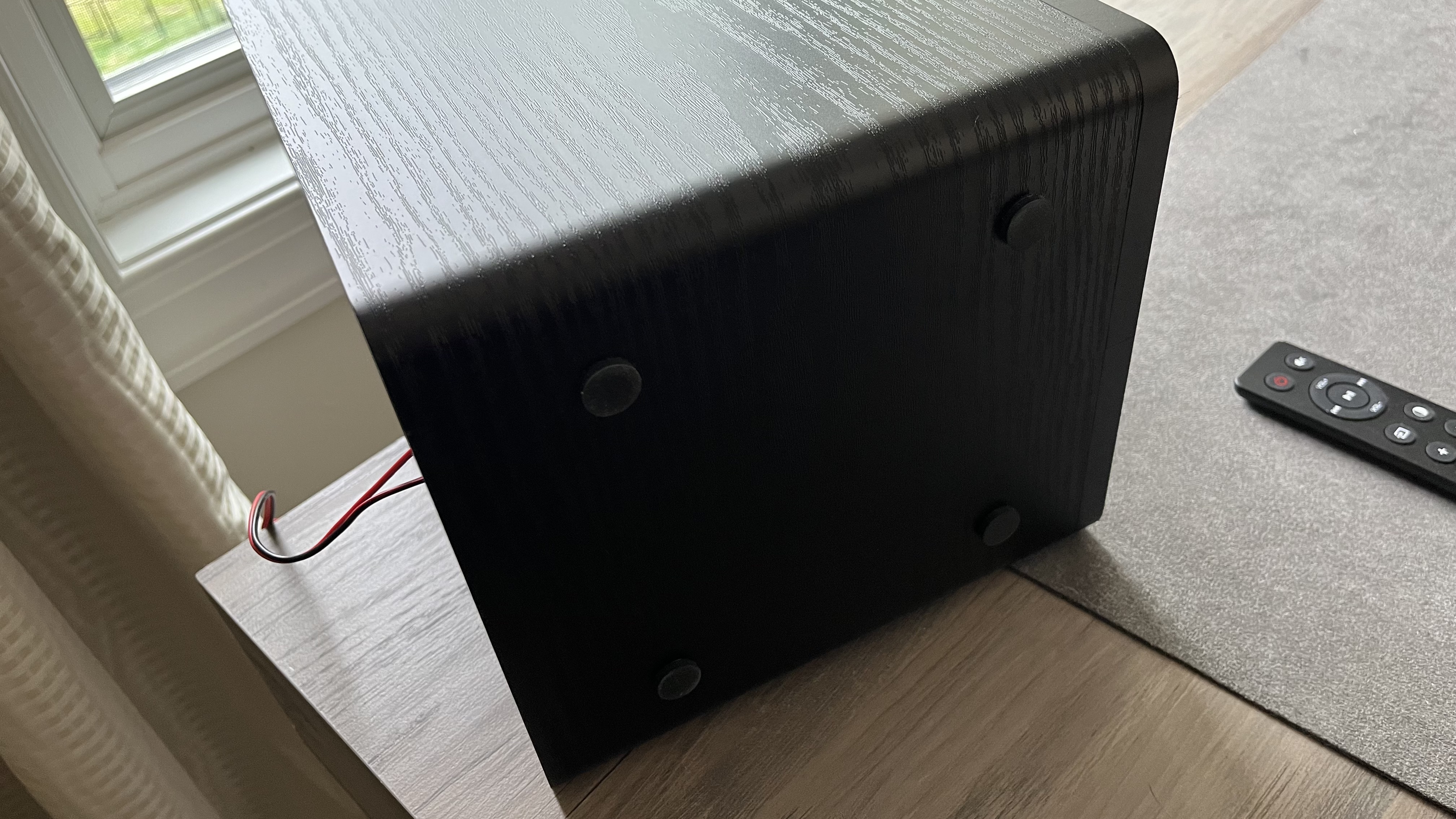
When using a setup with two or more speakers, their placement becomes much more important than the single, portable Bluetooth speakers such as the LG XBoom XO2T. While that speaker (and speakers like it) can deliver good audio for the price, they don’t offer a true stereo image (unless you can pair two of them in stereo mode, and even then it's a tough ask), leaving out a whole aspect that makes listening to music so enjoyable.
Still, if you don’t properly place your stereo speakers, you can end up with a lopsided soundstage (the left-to-right space in which you hear various audio images), muddy audio, or even flat-sounding music. And if you don’t properly place them, you might think it’s the speakers, when some adjustments are all you might need.
With that in mind, there are four different areas of adjustment. To start, those speakers shouldn’t be making physical contact with the desk or entertainment unit. The reason for this is that sound waves don’t just escape out of the front of the drivers and can bounce around inside the speaker cabinet, vibrating it and any surface it’s on. Imagine having your turntable vibrate because of some speakers sitting next to it. You’re not going to have a good time.
If you have space, the most ideal situation is floorstands. These allow you to place the speakers on their own dedicated surface. Alternatively, if you have limited space like me, you can get stands to raise the speakers off the desk as I did when I reviewed the Kanto Ora. Now, the Fluance Ai61 do use internal bracing to limit the transfer of vibrations. They also sit on rubber feet that limit the amount of contact they make with my desk. While having dedicated stands is better, especially at louder volumes, this approach helps quite a bit.
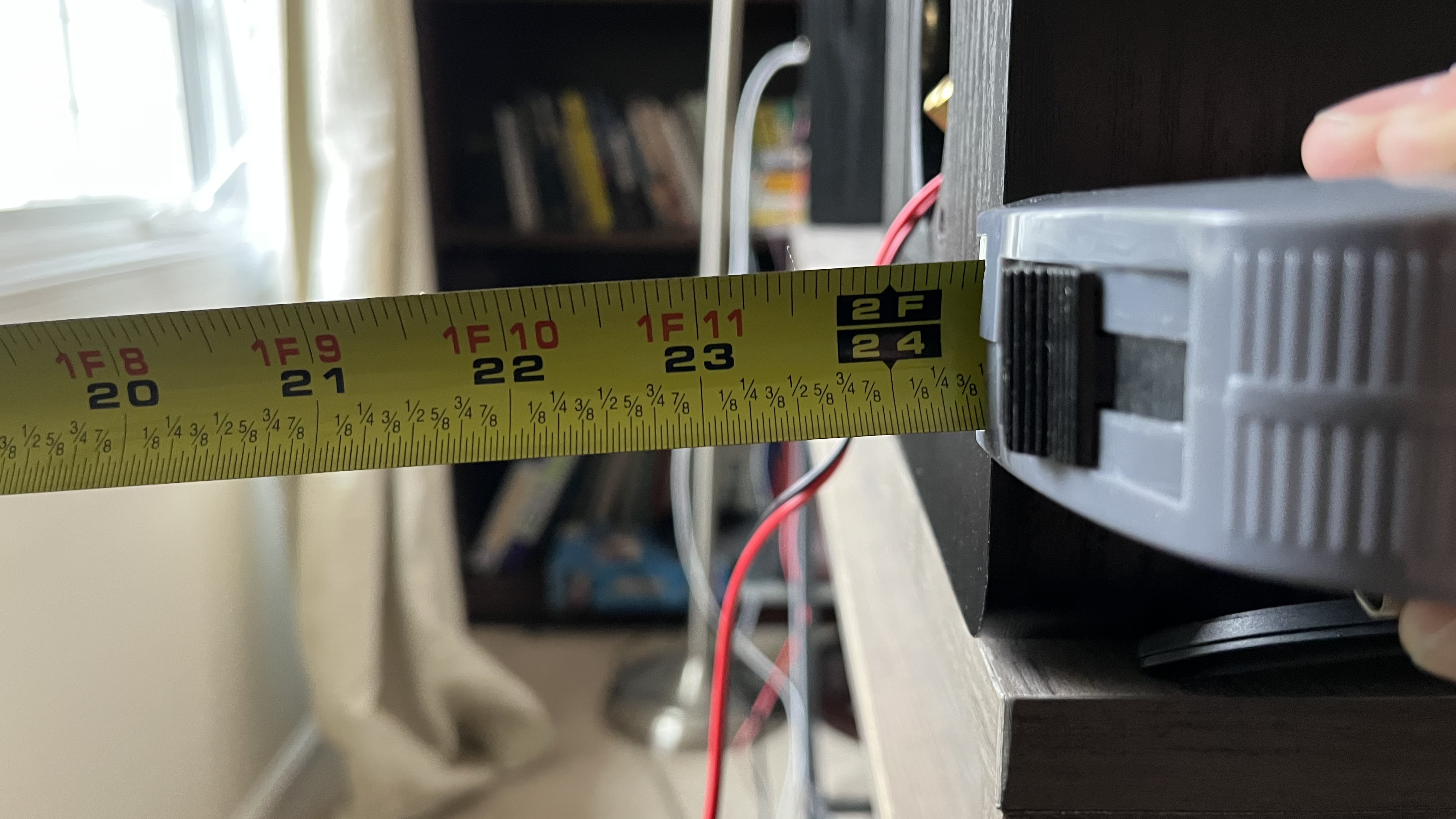
Sound waves not only bounce around inside the speaker cabinet, but they escape in all directions. That means they’ll go off at an angle as well as straight back. We want to minimize those sound waves that are bouncing off the wall behind the speakers as those reflections will interfere with the ones coming directly at you. Because of that, you want to keep the speakers at least two feet away from the wall, something to keep in mind if you were planning on placing them in a corner as well.
Next, you want the speakers to be set far enough apart from each other and the listener that they, along with the intended listening position, create an equilateral triangle. Doing this will give you a balanced mix – both sides should be equally loud and the center channel, usually the vocals, should sound like they’re floating directly in the middle of the speakers.
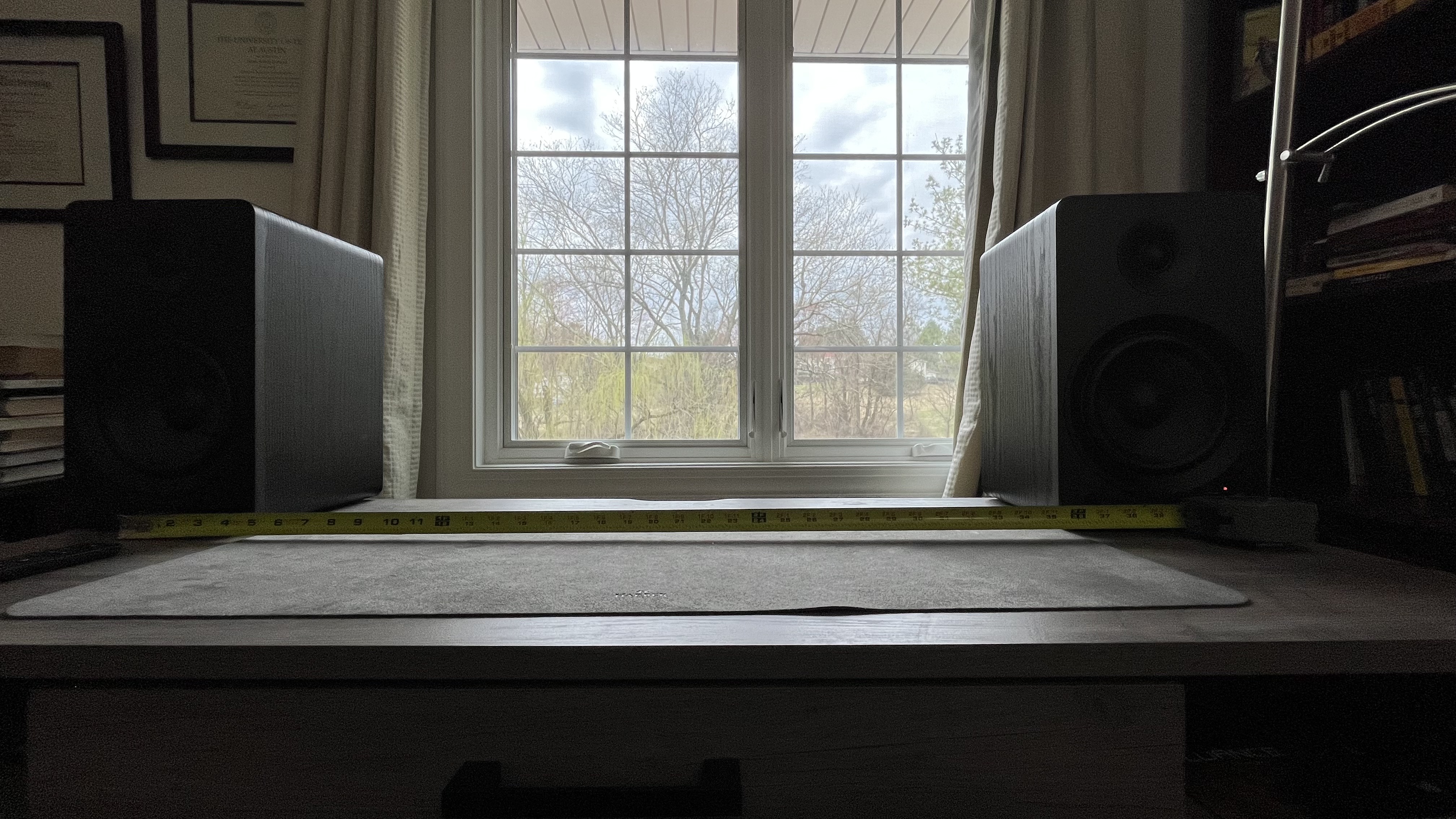
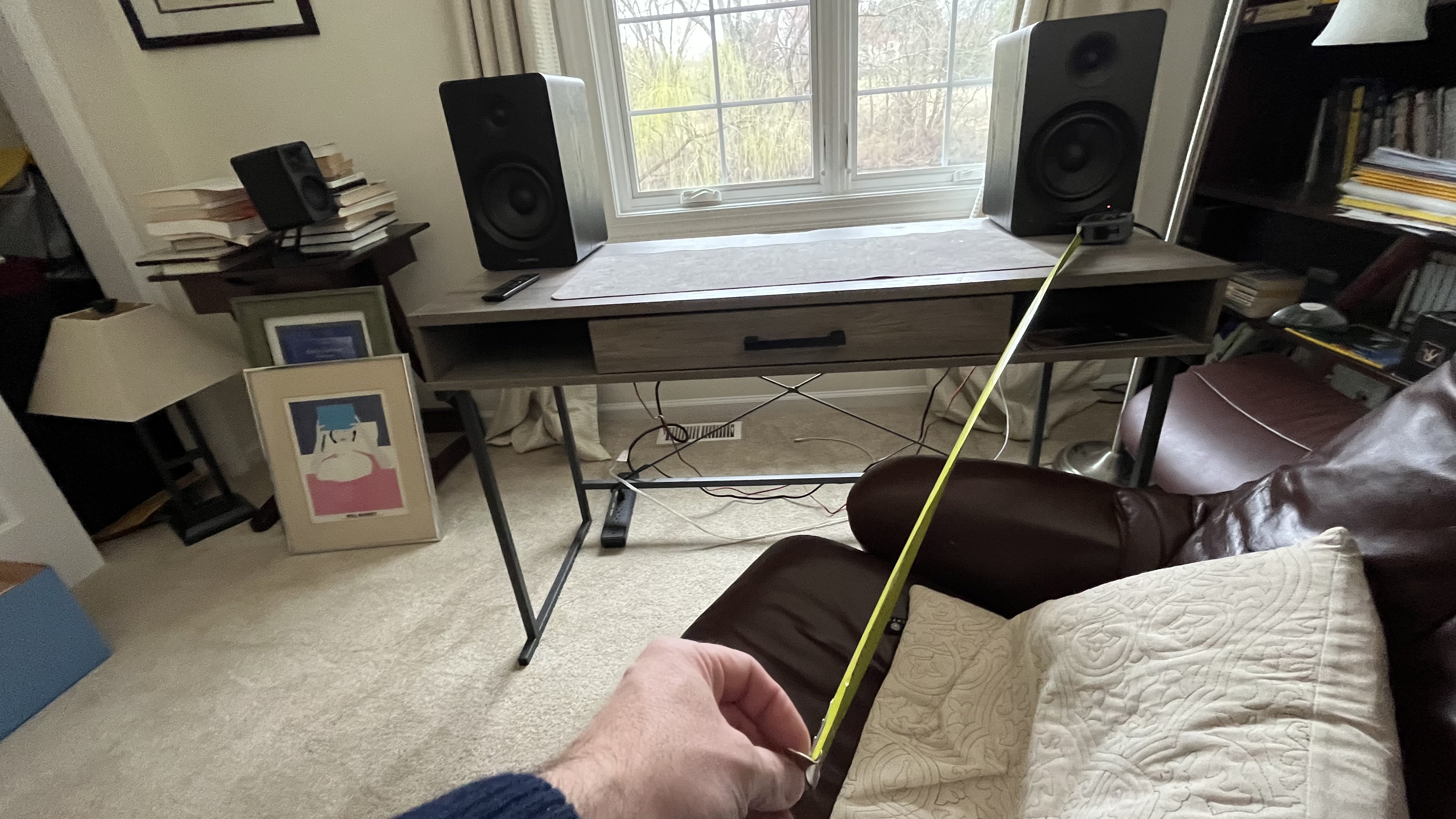
If you’re sitting at your desk and want to place each speaker at the corner of the desk, the space between them – let’s say three feet – should be the same distance as each one is from your seat. Check out out the gallery above to see what I mean.
Not only do you want the speakers to be evenly spaced between each other and you, you want them to be ear level. In the case of the Fluance Ai61, they’re tall enough that I don’t have to do anything. But with the Kanto Ora I mentioned before, I had two different stands I could use. Both are angled up, but one is a little higher than the other and I can pick the one that points the speaker’s driver more directly at my ears.
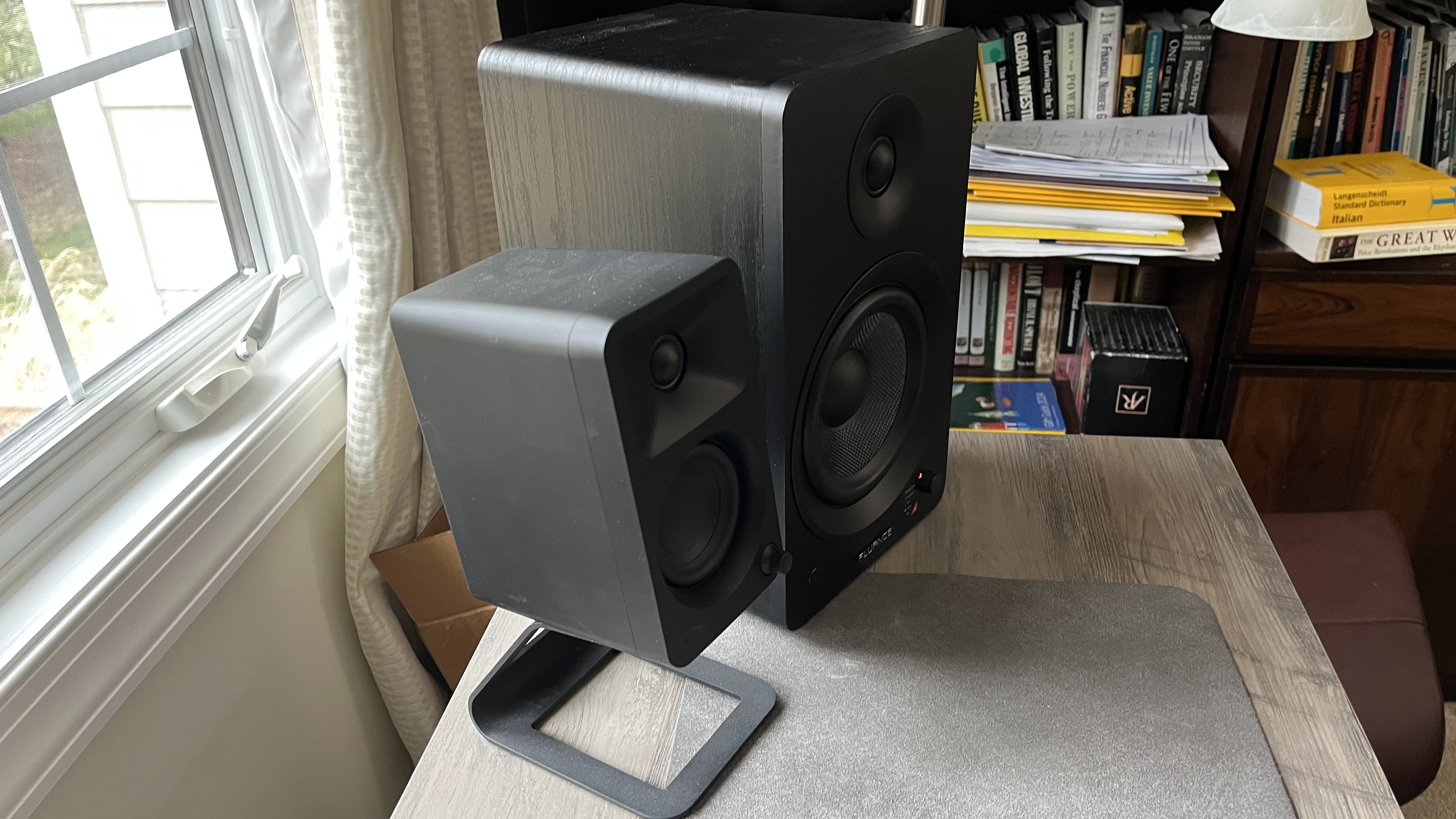
Many speakers, but not all, also need to be pointed inwards or toed-in so that they’re pointing towards your sitting position. Start with the speakers facing directly forward and slowly start angling them in until you like what you hear. When angling the Fluance Ai61s, I knew I had them set when I felt a cohesive soundstage instead of the audio just being on either side of me.
Lastly, if you want to make the most out of your stereo speakers, you’ll probably want to use a subwoofer. The low-end of audio is much less directional than the mids or highs so you don’t have to spend quite as much energy into proper placement. Just keep them near your system and also a few feet off the wall, and they should sound good. Just make sure to set the proper crossover (the frequency at which the audio is coming out of the subwoofer instead of the speakers), which will usually be listed in the speaker specifications.
Don’t forget the room
There are also sorts of room treatments you can make like bass traps and acoustic panels. I’m not going to go into all of that here. Just know that an overly cluttered room can give you unexpected sound wave reflections and absorptions, so can create a suboptimal listening environment.
Likewise, an empty room offers large reflective surfaces (the walls) that can also create issues. This is where you’ll want to look into sound treatments.
However, keeping a space that’s somewhat in the middle with a nice rug or carpeting is usually going to be more than adequate.
Fine-tuning your speakers
There is some additional post-processing you can do, if you feel like your audio needs a little tweaking. There’s all kinds of software and algorithms, most famously the room correction in the Sonos setup, that can create EQ profiles to offset issues with the space in which you’re listening. Dirac is a brand that offers room correction solutions.
However, if you’re setting up some bookshelf speakers, all you might need is a little EQ. If you’re using a digital source like a phone or computer to stream your music, you can just do a little tweaking. I encourage you to play around with either the built-in EQ or an EQ app (parametric is best if possible) to find what sounds most pleasing to you.
However, the safest bet is to start with a minor cut to the low-mids (300-500Hz) as that will often clear up any issues with muddiness. Cutting frequencies is often better than boosting as well, but if you need a little more treble or bass, don’t be afraid to give those frequencies a little juice.
However, if you feel like some frequencies are missing or over-represented, then look back over the placement. And if you feel good about the placement, then there’s something going on with the speakers themselves, and it might be time to swap them out for speakers that more represent what you’re looking for.
You might also like…
- The best speakers for all budgets, reviewed by experts
- The latest news in speakers
- The best turntables, according to our reviewers

James Holland loves checking out gadgets of all sorts, whether it's audio equipment, laptops, or vacuums (especially of the robot variety), and does so for a number of Future Publications including TechRadar, Top Ten Reviews, Homes & Gardens, and T3. He's built up an expertise for in-depth reviewing over the last four years. When he's not putting in the work on the latest tech, he loves to travel, play music, and eat questionable food.
You must confirm your public display name before commenting
Please logout and then login again, you will then be prompted to enter your display name.